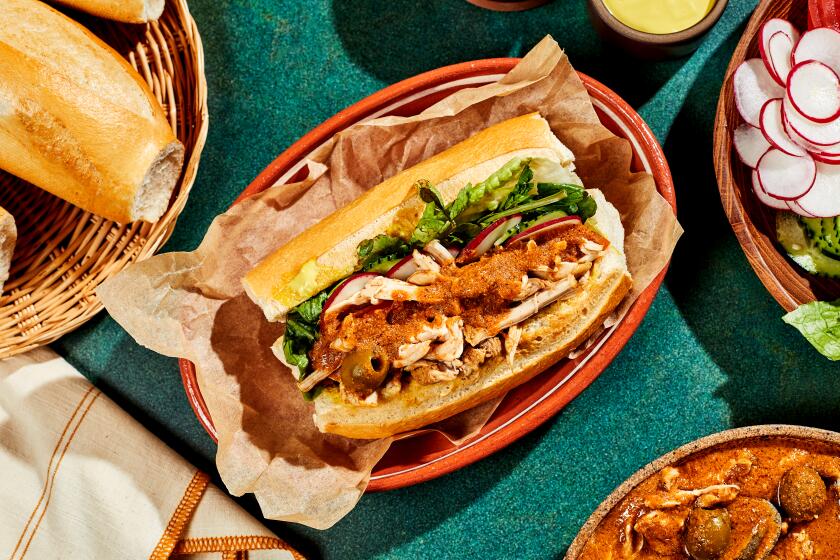Roast pork shoulder master recipe
There are two equally simple techniques you can use that result in two very different types of roast. One results in a pretty moist shoulder with cracklings, the other produces incredibly moist meat without cracklings.
The first technique, for moist pork shoulder with cracklings, uses a 325-degree oven to cook the roast to a temperature of 150 degrees. At that point, the skin will still need some crisping, so turn the oven up to 450 degrees and give your roast a good 15-minute blast. This will raise the internal temperature to between 155 and 160. Once you take it out of the oven and let it rest, the carryover cooking will bring the internal temperature up another 5 to 10 degrees.
The second technique is Paula Wolfert’s method for incredibly moist pork shoulder: Roast the pork at 250 degrees to an internal temperature of 170 degrees, about 6 hours.
Whichever method you choose, the preparation is easy. The only slightly sticky part is scoring the skin, which is tough and tender at the same time. Use a really sharp knife and take care to cut through the top layer of the skin, but not to puncture the meat -- though cutting through the underlying fat layer is fine. Also, remember that the optimum end-point temperature for fresh pork roasts should be at least 160 degrees and should not exceed 170.
From the story: Almost too good to be true
Pat the roast dry with a paper towel and carefully score the skin into diamond shapes. This is most easily done with a small sharp knife.
Sprinkle the roast liberally with salt, about 2 1/2 tablespoons. Place the roast upright on a plate, with the shank pointing straight up. Refrigerate, uncovered, for at least 2 hours to overnight.
Heat the oven to 325 degrees. Remove the roast from the refrigerator; pat dry. Arrange on a rack in a roasting pan, skin-side up and place in the oven. Roast to an internal temperature of 150 degrees, about 2 3/4 to 3 hours.
When the meat is done, raise the oven temperature to 450 degrees for 15 minutes to crisp the skin. Remove the roast from the oven and let stand at least 20 minutes to 1 hour.
To serve, use a carving knife to slice away the cracklings, keeping them in a single sheet as much as possible. Place on a separate plate. Slice away any thick pieces of fat that may remain. Slice the meat from the bone in 1/4- to 1/2-inch pieces. This is most easily done by slicing parallel to the main leg bone, working your way around the leg. Arrange the sliced meat on a platter and place the cracklings on top.
Get our Cooking newsletter.
Your roundup of inspiring recipes and kitchen tricks.
You may occasionally receive promotional content from the Los Angeles Times.
















